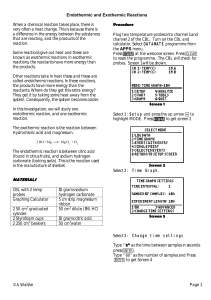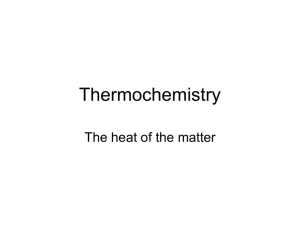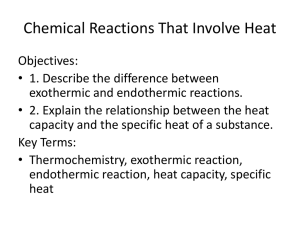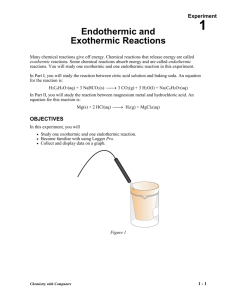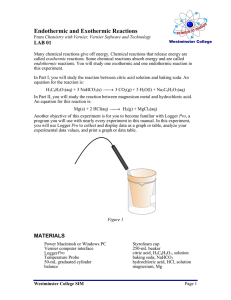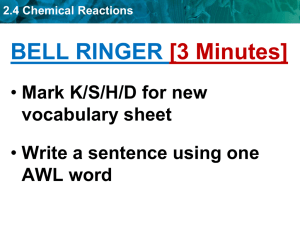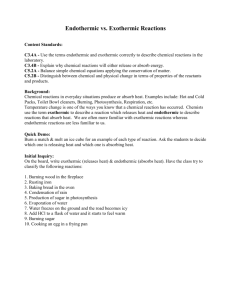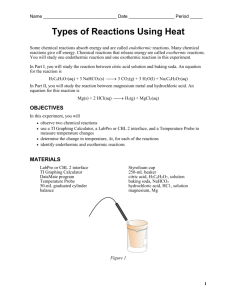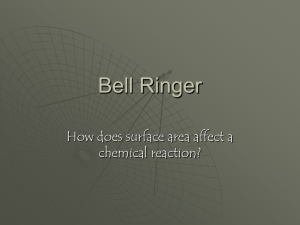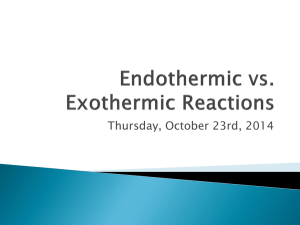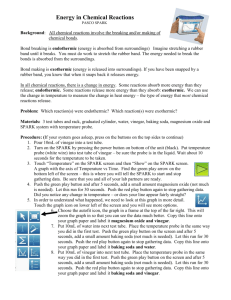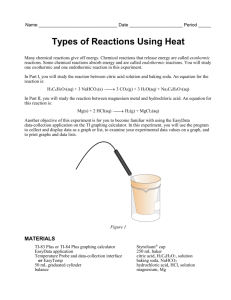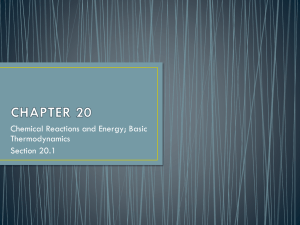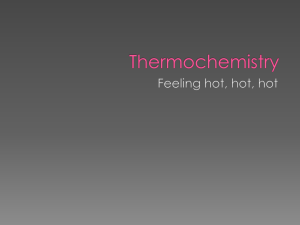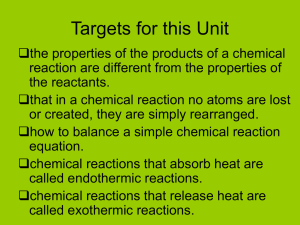Energy - Weebly
advertisement
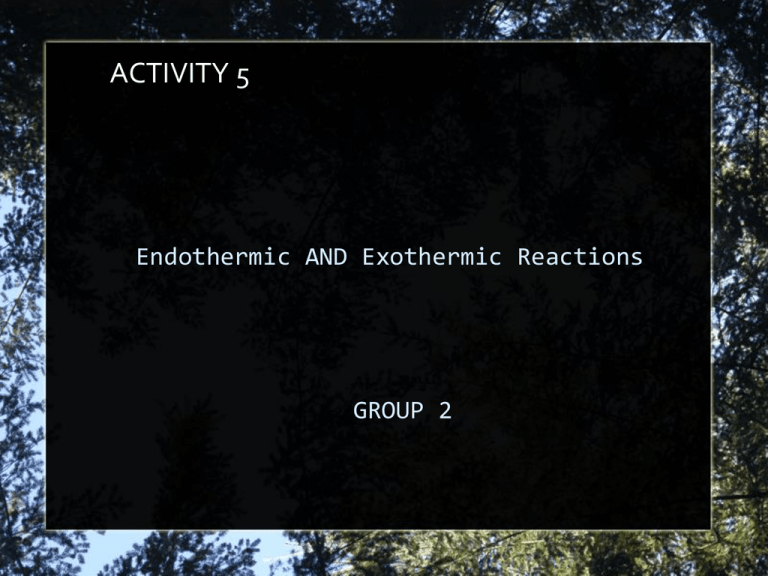
ACTIVITY 5 Endothermic AND Exothermic Reactions GROUP 2 INTRODUCTION Whenever Physical changes and Chemical changes occur in matter, energy changes are also accompanied, which is mainly heat energy. Two kinds of thermal reactions are Endothermic reaction and Exothermic reaction. Endothermic Reaction – Reaction that absorbs heat. Exothermic Reaction – Reaction that releases heat. LAW OF CONSERVATION OF ENERGY Energy cannot be destroyed nor created Endothermic process Heat flows into the system from the surroundings in an endothermic process. Surroundings Cold pack Energy Temperature falls 4 Energy Level Diagrams Endothermic reactions products energy reactants The products are higher in energy than the reactants energy taken in is positive time of reaction 5 The products are higher in energy than the reactants. In this case making the bonds gives you less energy than breaking them. 6 Exothermic process Heat flows into the surroundings from the system in an exothermic process. Surroundings Energy Hot pack Temperature rises 7 Energy Level Diagrams Exothermic reactions energyreactants Energy given out is negative products Time of reaction The products are lower in energy than the reactants 8 The products are lower in energy than the reactants. In this case making the bonds gives you more energy than breaking them. 9 Objective To determine the energy changes that occur during the reaction of Citric Acid and Baking Soda and also the reaction of Hydrochloric Acid and Magnesium Ribbon. Apparatus: Beam Balance Beaker, 250 mL Graduated Cylinder Spatula Watch Glass Thermometer Materials: (Chemicals) Baking Soda 1.5 M Citric Acid 2M HCl Magnesium Ribbon Data and Results: Citric Acid + Baking Soda HCl + Mg Ribbon Final Temp. 22 ºc 34 ºc Initial Temp. 28 ºc 27 ºc Temp. Change -6 ºc 7 ºc (1)H₃C₆H₅O ₇ (aq) + 3NaHCO₃ (s) 3 CO₂ (g) + 3H₂O (l) + Na₃C₆H₅O₇ (2)Mg(s) + 2HCl (aq) H₂ (g) + MgCl₂ (aq) Q’s & A’s : 1. What type of energy change is associated with the chemical reaction? Citric Acid + Baking Soda : Endothermic Reaction Mg + HCl : Exothermic Reaction 2. How do the experimental data support the energy changes describe? A: Due to the differences of FINAL and INITIAL temperature. The higher the differences in temperature, the higher the changes in energy. 3. What does a negative change in temperature value indicates? A: It indicates that the temperature decreases. Meaning an Endothermic reaction is taking place or heat is required to perform chemical reaction. 4.Describe 3 ways to determine the chemical reaction has taken place? 1. 2. 3. Changes in temperature. New substance(s) is formed Changes in color 5. Which reaction took place at a greater rate? Explain. A: HCl + Mg ribbon. This is because the differences in temperature is greater than the differences of temperature of the Citric Acid+ Baking Soda. Conclusion: Whenever chemical reactions take place, it is always accompanied by changes in energy, especially heat energy. Done by: Pineda, Aaron Russell Ong, Mika D’souza, Antonella Kang, Tai Woo Jo, Bean



